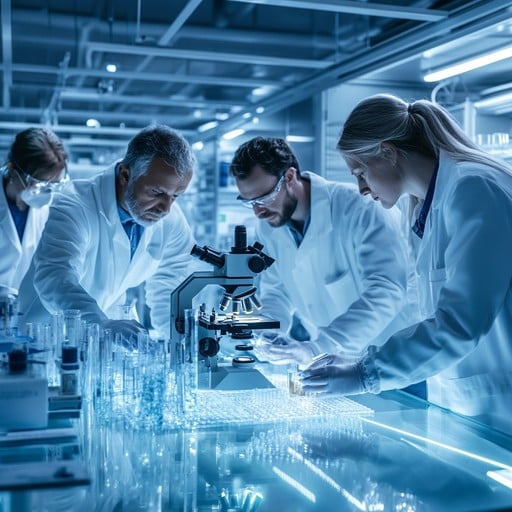
Lab Updates 2025: Smart Automation & Sustainable Practices
Laboratories around the world continue to evolve rapidly. In 2025, the lab bench isn’t just about pipettes and petri dishes — it’s becoming a smart, connected, sustainable environment. From AI-enabled equipment to low-waste protocols, the next generation of labs is here. Below are the key updates and what they mean for scientists, institutions and industry.
1. Automation & Robotics Take Over the Routine
One of the biggest shifts in modern labs is the deeper deployment of automation and robotics. According to an industry article, labs will increasingly automate pre-analytical workflows (like aliquoting, sorting, decapping) in 2025. 진단+1
In parallel, the use of collaborative robots (cobots) is growing in life-science labs, handling precise repetitive tasks and freeing researchers to focus higher up the value chain. labbit.com+1
Why it matters
- Reduces human error and improves reproducibility of experiments.
- Frees up skilled scientists to focus on design, interpretation and innovation rather than mundane tasks.
- Enables high-throughput operations and faster turnaround in settings like diagnostics, drug discovery, materials labs.
What to look for
- Smart pipetting systems with adaptive control (sample volume, viscosity, etc). go.zageno.com+1
- Robots integrated with sample tracking (RFID, barcoding) and inventory management.
- Automation in front-end processes (sample intake, sorting) and back-end (data capture, archiving).
2. Digital Workflows, Data Integration & Smart Analytics
A key lab update is the shift toward fully digital workflows and connected instrumentation. The “Internet of Medical Things” (IoMT) concept is moving into labs: instruments communicating, smart consumables, real-time data capture. 진단+1
Labs are also adopting advanced data analytics and visualization tools to monitor workflow efficiency, detect bottlenecks, and enforce quality control. 진단
Why it matters
- Greater transparency and traceability throughout lab operations.
- Enhanced decision-making: when data is integrated and visible, labs can optimise processes, spot anomalies early, improve yield/quality.
- Alignment with regulatory, compliance and audit requirements via strong data trails.
What to watch
- Implementation of unified systems: LIMS (Laboratory Information Management Systems), ELN (Electronic Lab Notebooks), data dashboards. Sapio Sciences+1
- Real time analytics applied to lab operations: turnaround time tracking, instrument utilisation, predictive maintenance.
- Instrumentation with built-in connectivity: smart freezers, centrifuges with telemetry, IoT sensors for environmental monitoring.
3. Sustainability & Green Practices in the Lab
The laboratory environment has a significant environmental footprint — high energy use, large volumes of chemicals and disposables, specialised equipment. In 2025, a strong trend is toward sustainable lab equipment and practices. Microlit
Why it matters
- Cost savings: energy efficient equipment and waste-minimising practices reduce overheads.
- Environmental stewardship: labs adopting eco-friendly materials, less toxic reagents, better disposal protocols.
- Institutional branding: universities, research centres and companies increasingly require sustainable credentials.
What to watch
- Equipment designed for recyclability, lower power consumption, minimised reagent usage. Microlit
- Lab protocols updated to reduce waste, extend equipment lifespan, and optimise consumable usage.
- Use of dashboards to track resource usage (energy, water, reagents) and lab “carbon footprint”.
4. Emerging Tools & Smart Instrumentation
Labs in 2025 are equipping themselves with next-gen tools: AI-assisted pipettes, RFID-enabled sample tracking, cloud-connected instruments, smarter analytics. go.zageno.com+1
Why it matters
- Increases precision and reproducibility in experiments.
- Helps manage ever-larger datasets and complex workflows (omics, high throughput screening, materials discovery).
- Facilitates remote monitoring and collaboration across labs and geographies.
What to watch
- Smart instrumentation that adapts real-time (e.g., adjusts volume based on sample characteristics). go.zageno.com
- Integrated sample-tracking systems (RFID, barcodes), linking physical samples to digital records.
- Cloud-connected devices enabling remote monitoring, predictive maintenance, and collaborative workflows.
5. Implications for Researchers & Institutions
With these lab updates, there are several implications for those working in, managing or creating lab environments:
- Training & Skills: Scientists will need skills beyond bench work—data literacy, familiarity with automation systems, digital workflows.
- Procurement Strategy: Equipment acquisition decisions will increasingly weigh connectivity, sustainability, integration ability, total cost of ownership.
- Workflow Redesign: Labs will shift from isolated instruments to connected systems — sample to result pipelines will be streamlined.
- Regulatory & Quality: As labs become digital and interconnected, regulatory compliance, data integrity and cybersecurity gain importance.
- Institutional Investment: Research institutions and companies must invest not just in instruments, but in infrastructure (network, data architecture), training and sustainability initiatives.
Conclusion
The lab of today looks very different from the lab of even five years ago. In 2025, updates in automation, digital integration, sustainability, and smart tools are redefining what a lab is and how science is done. Whether you’re running a small academic lab, managing a large research facility, or writing about science infrastructure, staying ahead of these trends is key.